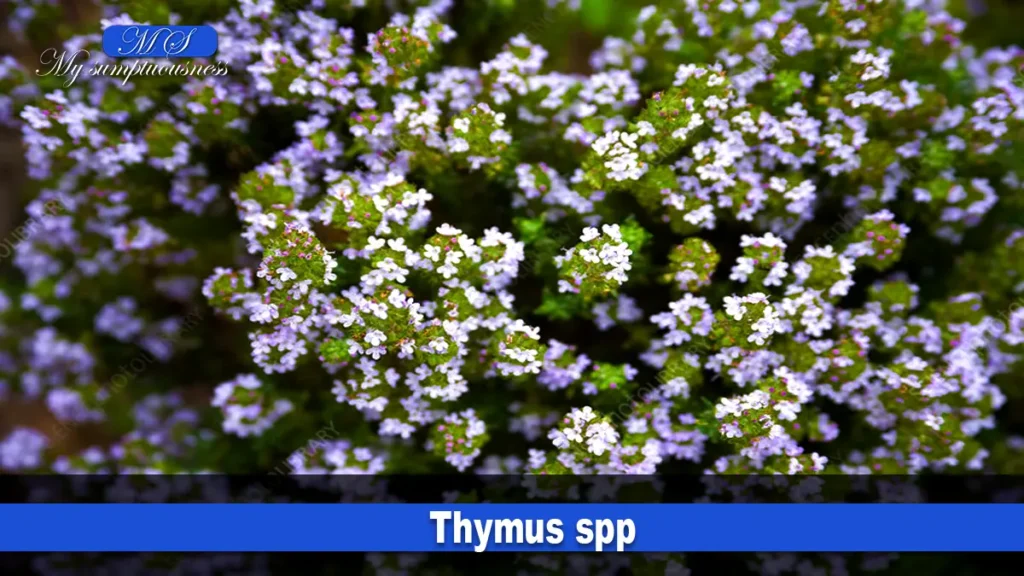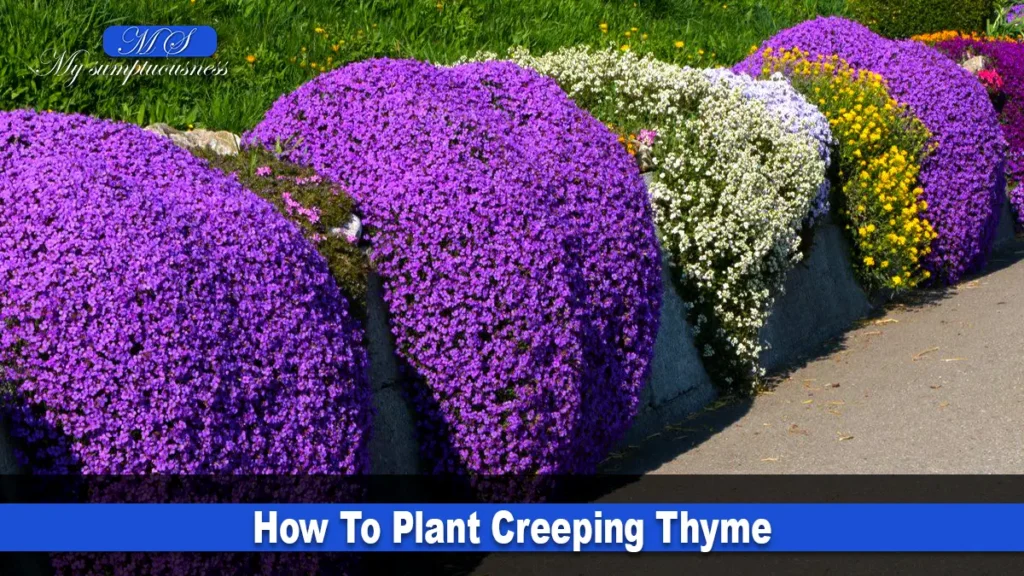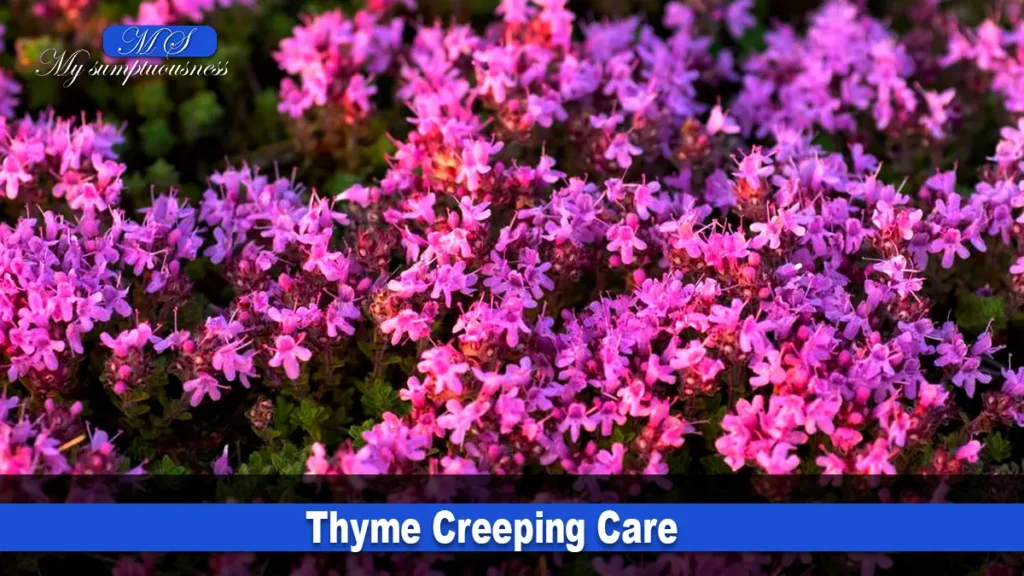Last Updated on 27 September 2023 by mysumptuousness.com
If you’ve only thought of creeping thyme as a plant for your garden, you will be surprised to know that there are also several creeping varieties of more value for their beauty than their culinary qualities.
Introduction
Because of its capability to resist regular foot traffic, we can also use creeping thyme seeds as an easy-to-care lawn plant, especially on hillsides and sunny slopes. Not only does this dearth-tolerant plant require much less water than regular turf grass, but it also spreads fast to fill in the empty spots. Creeping thyme also creates a colorful carpet in the spring season, when it blooms into a plethora of diligent pink or purple flowers.
Creeping Thyme Basics

Botanical name:
Thymus spp.
Common names:
Creeping thyme, wild thyme, mother of thyme
Plant type:
Semi-woody grass groundcover
Zones:
4-9
Exposure:
Full sun
Height/Spread:
1 to 4 inches tall. Spreading up to 18 inches. They are slightly taller when they bloom.
Bloom time:
Late spring to early summer, their blooms last for 3 to 4 weeks. Plants do not bloom in their first growing season because they focus all their energy on the development of their roots. However, they usually flower in the fall or spring.
Flowers:
Star- or bell-shaped, measuring about 1/8 inch across.
Foliage:
They are slightly hairy and growing to 1/4 inch in length. They are olive green, dark green, or gray-green, as per their cultivation time.
Special attributes:
- Drought tolerant
- Attracts bees and butterflies
- Rabbit and deer-resistant
- Non-toxic to people and pets
How To Plant Creeping Thyme

When to plant:
In spring, after the threat of frost is over, or in early fall, we should plant it. Avoid planting when the heat of the summer is high, when it’s hard for plants to grow.
Where to plant:
A site that receives the full sun is best for the best flowering, but plants can also tolerate light shade.
How to plant:
Sow seeds either indoors at the start of spring or directly outdoors after the problem of frost is over. It typically requires 2 to 3 weeks for thyme seeds to grow.
To transplant thyme into the garden, we need to dig a bit wider hole but slightly shallower than the root ball. Carefully disentangle the roots and put the plant into its hole, slowly filling the soil around the roots until they are fully covered. Water correctly and maintain regular soil moisture until plants grow.
Soil requirements:
Blue Creeping thyme seeds grow in sandy, rocky, or silty soils that have excellent drainage. It also tolerates poor soil but avoids planting it in heavy clay.
Spacing:
Spacing often depends upon how fast you need the area to fill in with the growth. As a simple rule, keep plants about 8 to 12 inches apart to maintain their spreading system. If using thyme ground cover as lawn grass, keeping closer will make them denser.
Thyme Creeping Care

Watering: Although drought-tolerant red creeping thyme seeds, new plants need to be watered often before their roots take hold. Additional watering should only be required during extended dry spells following the first year. Refrain from overwatering plants and never let them sit in standing water to prevent root rot.
Additives and fertilizer: To help loosen the structure and promote drainage, you can lightly amend the soil with compost, leaf mold, or other organic matter. Lean soil is ideal for creeping thyme. Therefore, extra fertilizer is usually not needed. You can encourage lush, fresh growth in the spring by applying a balanced organic fertilizer if the soil is particularly nutrient-deficient.
Pruning: Creeping thyme plants can grow quite spindly and woody at the base over time because of their woody stems. Cut back your plants by half in the early spring before new growth starts to encourage regrowth and revitalization.
Deadheading: While it’s not necessary to remove spent blooms from thyme bushes, doing so in the middle of summer with hand or electric shears will keep your plants looking neat. Mower blades adjusted to a height of 2 to 3 inches can be used to remove wasted blossoms from creeping thyme lawns.
Overwintering: Climbing thyme typically stays evergreen all winter long in temperate regions. Plants that experience harsh winters may lose their foliage, but it will swiftly reappear in the spring.
Add a few inches of loose mulch, such as leaf mold, over creeping thyme ground cover to protect it from frost or freezing damage in the winter. By doing this, the plant’s shallow root system may be shielded from frost heave.
Propagation: By stem cuttings obtained in late spring or early summer or by division in the spring or late fall.
Pests and diseases: It has little insect or disease issues, although if grown in poorly drained soil, it is susceptible to root rot. In hot, dry weather, keep an eye out for spider mites as well.
FAQS
It is better to plant creeping thyme in spring or summer in wet areas, in soil that drains fast and which has no danger of water logging in the winter season. If you want to grow in pots, use soil pots manure.
To transplant thyme into the garden, we need to dig a bit wider hole but slightly shallower than the root ball. Carefully disentangle the roots and put the plant into its hole, slowly filling the soil around the roots until we fully cover them. Water correctly and maintain regular soil moisture until plants grow.
So, it is clear that the Red Creeping Thyme lawn is non-toxic and also very safe to grow where pets are around.
Creeping Thyme grows between 2 to 3 inches high and each grown plant spreads approximately to 1 foot. After many years, the apex of these thymes becomes woody and starts to die. Dead parts need to be carefully cut, and you can have healthy outer parts of the plant to be replanted.
Plant red creeping thyme either in fall or in spring. It’s hard for growing plants to fit in summer’s heat.